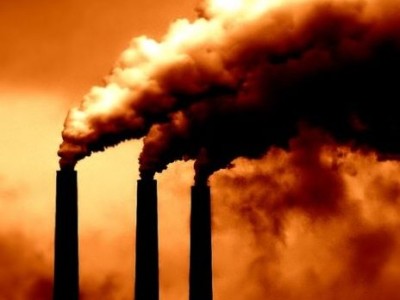Climate Change: A Plausibility Check
No doubt there are many reasons for the existence of climate skepticism, but at least one is probably based on a sense of scale. The amount of CO2 emissions is large in absolute term — now about 10 gigatons per year roughly speaking — but the atmosphere is much, much bigger. Of course, CO2 has been accumulating, so the amount in the atmosphere is larger by a significant factor, but it’s still very small compared with the total atmosphere. Is the climate sensitive sensitive to atmospheric changes of this magnitude?
The answer is clearly yes — the climate really is that sensitive to at least some substances. Mount Pinatubo erupted in 1991. The eruption released into the atmosphere approximately 10 gigatons of magma, and 20 megatons of SO2,This caused a temperature decrease in the Northern hemisphere of 0.5–0.6 °C (0.9–1.1 °F), and a global fall of about 0.4 °C (0.7 °F).
The Pinatubo effect seems to be clear and, so far as I can tell, isn’t contested. For example, this chart is from a climate denial website:

Of course, the fact small changes in some components (suspended solids and SO2) can have a significant climate impact doesn’t prove that larger amounts of CO2 are changing the climate, any more than the fact that one substance is poisonous proves that another one is. What it does show, however, is that even small traces of substances can have significant climate impacts. So the claim that CO2 and other GHGs have such impacts cannot be rejected as implausible merely because CO2 is a trace gas.
By the way, the climate denial site argues from this that climate responds quickly to changes in radiative forcing and that therefore CO2 levels have already changed the climate as much as they ever will. I think this overlooks feedback effects, the heat capacity of the ocean, and the difference between a transitory change in radiative forcing and one that lasts decades or centuries. Some poisons kill quickly or not at all; others accumulate over time to deadly effect.
Reader Comments
One Reply to “Climate Change: A Plausibility Check”
Comments are closed.







If you are serious about CO2 reduction, I’m going to suggest that you re-think your opposition to nuclear power (it’s probably safe to assume that essentially all readers of this blog are reflexively anti-nuclear, also probably never having thought very deeply about it).
With respect to safety, consider the European ExternE studies, which attempt to assess the total life-cycle risk of major power technologies: construction, fuel chain (if any), operation, decommissioning and accidents. It may surprise you to learn that nuclear, even including the Chernobyl accident, is significantly safer than fossil fuels (which should be obvious), but also safer than hydro and comparable to wind and solar. Here’s a greatly expanded version of a talk I gave at my kids’ school for Earth Day the month after Fukushima, entitled “A Rational Environmentalist’s Guide to Nuclear Power”:
http://www.scribd.com/doc/54904454
It is ironic that tens of thousands of people are dead today from coal power (mining, transporting, and ingesting its emissions to air and water), because 30 years ago, the coincidence of a scary movie with a real nuclear accident (TMI) that harmed no one at all stopped the expansion of US nuclear power dead in its tracks and instilled a climate of unreasoning fear that still persists. Yet people who identify as environmentalists still don’t quite get it, because those deaths don’t make the news.
Why post here? Because you, collectively — the lawyers and law students who are interested in the environment — are a big reason why no new nuclear capacity has been built in this country. The primary cost of nuclear power is the initial capital investment. The fuel cost is almost negligible, particularly since for the last 15 years half the US nuclear fuel supply has come from buying former Soviet warheads and turning them into reactor fuel (swords into plowshares?).
The environmental movement has become adept at using the legal system strategically to impede nuclear construction, particularly prior to the ‘combined license’ procedure under part 52 of the 1992 Energy Policy Act. When Part 50 prevailed, would-be operators took huge financial risk, because it required a separate license to start up the plant after the construction cost had already been incurred.
Please take the time to learn the current reality of nuclear power, which most likely doesn’t match your preconceived notions. I recommend the book “Terrestrial Energy” by William Tucker as a good, readable discussion of the quality and safety transformation of the industry since the 1970s.